
Review on High-Performance 4 Way AC Manifold Gauge Set - Perfect for HVAC Systems with 5FT Hose, 3 Acme Tank Adapters, Adjustable Couplers, and Can Tap - Ideal for R410A R134A R22 R404A Refrigerants by Cesar Rios

Difficult to use low pressure gauge
BENEFITS: + 4 hose/valve design + Refrigerant bleed valve + Valve stem tool included + Fitting included for almost every connection imaginable + Carrying case included + Clear instructions CONS: - Gauge low pressure is incorrectly calibrated and almost unusable - plastic manometer - everything has to be completely disassembled to fit into the case - vacuum readings are mostly unusable due to the scale Review: I used it to repair the air conditioning on a Toyota 4Runner last weekend. My rating is based on this experience. At first glance the perfect pressure gauge set with 4 separate hoses and valves, as well as many adapters and accessories. It's only when you start using it that you realize there are some real problems. I have used several different HVAC gauges in the past and figured this set would be my new favorite as there are 4 separate hoses and valves that allow you to connect everything including the vacuum pump and refrigerant at the same time without the need for it is Replace the hoses if you usually make mistakes. I quickly realized that these pressure gauges are very difficult to use properly. The first thing I didn't like was the negative pressure scale. You can see in my photos and videos that it's almost useless when testing system vacuum as the area on the gauge dedicated to reading vacuum is so small you can't tell the difference between -10 and -30psi can recognize. . A small change in vacuum level can dramatically change the boiling point of water. At 29.02 inches vacuum water boils at 76F and at 27.75 inches water boils at 104F. The purpose of creating a vacuum in a system is to evaporate any water that may be in it. I can't tell 27.75 from 29.02 on this gauge. With these gauges, I can't be sure that I'm getting a sufficient vacuum level. It also causes a problem when you check for a leak with a vacuum. It's impossible to see a small vacuum leak with this gauge unless you let it sit for a very long time. The low pressure gauge causes the problem again when you add refrigerant or check the level. Typically, the low pressure readings in an automotive air conditioning system using R134a are below 100psi. Most gauge sets take this into account and use most of the gauge range below 100psi, giving you more accurate pressure readings in the lower ranges. It is very difficult to accurately read low pressure readings on this gauge because the scale is highly compressed. It is not necessary for the low pressure scale to go above 150psi, but this does go up to 500psi. In fact, you can only read your PSI to within 5psi on this gauge, while many of the best gauges give very accurate readings, down to 1psi. I've also encountered some serious issues with the gauges' functionality. On more than one occasion I found the low pressure gauge to be stuck and not moving at all. I had to close and reopen the valve on the low pressure service port to get the gauge moving again. I've also found that even small adjustments to the opening/closing of the valve on the working end of the hoses can cause the gauge to fluctuate. I've never seen this with any of my other calibration kits. I quickly lost confidence in the readings I was getting while working. The final gripe I have for these sensors is the housing that comes with them. It's a good thing that even though they include a housing, it's very difficult to take apart EVERY last piece of the sensor just to remove it. Overall, I would only recommend these gauges to the casual handyman without a vacuum pump. For those looking to use a vacuum pump I would recommend finding gauges with a better low pressure scale that will give more detailed vacuum readings.
- Fits
New products
Comments (0)
Top products in ❄️ Air Conditioning Tools & Equipment

🔍 UView 560000 Combustion Leak Tester: A Reliable Tool for Efficient Diagnosis

9 Review
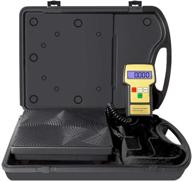
VIVOHOME 220LB HVAC Electronic Digital Refrigerant Charging Weight Scale – High Precision with Protective Case

9 Review
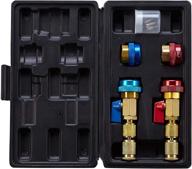
Lichamp Automotive R1234YF Installer Standard

9 Review
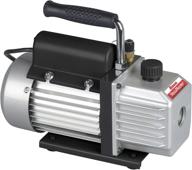
💨 Robinair (15115) VacuMaster Single Stage Vacuum Pump - For Efficient Single-Stage Vacuuming, Delivers 1.5 CFM

9 Review
Another interesting products
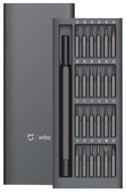
Xiaomi Mi x Mijia Wiha Precision Screwdriver Set (DZN4000CN), 25 pcs

34 Review
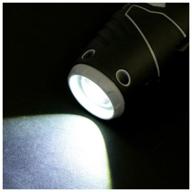
Rechargeable screwdriver OA-3,6F (433.0.2.00), 3.6 V, 1.3 Ah Li-ion, blister

46 Review
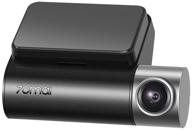
DVR 70MAI Dash Cam Pro Plus+, black (A500S), black

87 Review
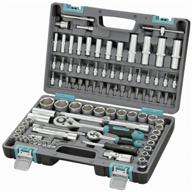
Bit and socket set Stels Tool set, 1/2", 1/4", CrV, plastic case 94 pcs, Stels, 94 pcs, black

46 Review

